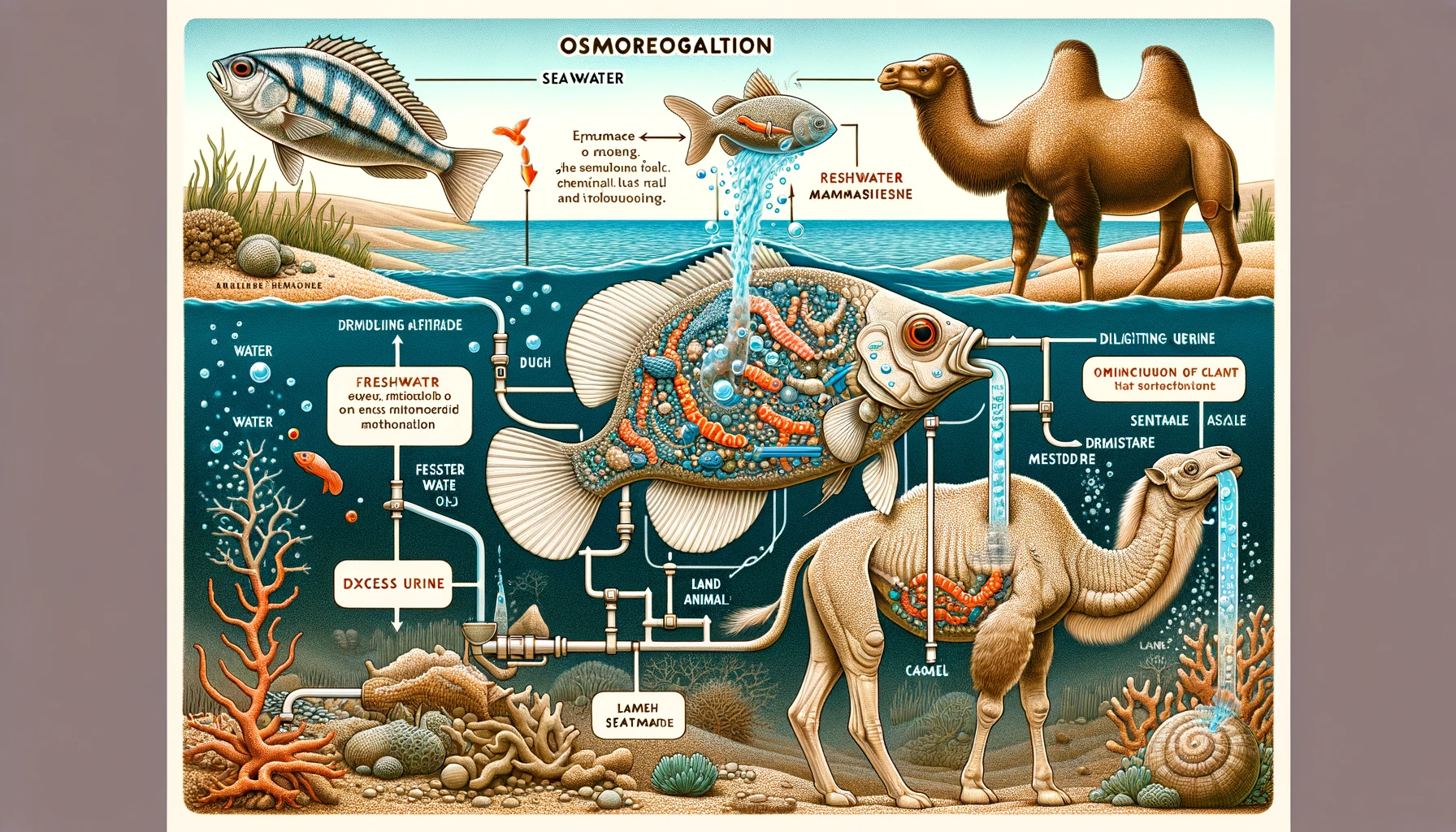All animals use osmoregulation to keep the concentration of their body fluids constant. The phenomenon of osmosis regulates the gain and loss of water, and saltwater, freshwater, and terrestrial animals balance their fluids in different ways, depending on their physiology. Saltwater animals drink seawater and excrete salts, while freshwater animals drink little water and excrete a lot of urine. Land animals maintain a constant concentration of body fluids through a variety of adaptations that consume and conserve water.
All animals need to keep the concentration of their body fluids more or less constant in order for their physiological systems to function properly. This balancing act of water gain and loss is known as osmotic regulation. Animals gain and lose water in their bodies by osmosis when there is a difference between their habitat and the concentration of their body fluids, especially salinity, so keeping the concentration of their body fluids constant is a critical survival task.
Osmosis is the phenomenon in which a solution of different concentrations on either side of a semi-permeable membrane moves from the less concentrated side to the more concentrated side. In salt water, the salt dissolved in water is the solute and the water is the solvent. If there is salt water of different concentrations on both sides of a semi-permeable membrane, the water on the lower concentration side will move to the higher concentration side. If the concentrations are the same on both sides, there is no net migration of solvent. This phenomenon of osmosis is one of the basic principles of mass movement and plays an important role in many biological processes.
Animals are categorized into osmotolerant and osmoregulatory based on how they maintain their water balance in response to this phenomenon. First, osmotolerant animals are all saltwater animals, meaning that the salt concentration, or salinity, of their body fluids and seawater is the same, so there is no net movement of water. Examples include crabs, mussels, and midges. They have the same salinity of seawater and body fluids, which allows them to maintain physiological balance without the need for osmotic regulation.
Osmoregulatory animals, on the other hand, have different salinities in their body fluids and in their habitat, and they need to osmotically regulate their body fluids to keep them from changing. Among osmotically regulated animals, most fish that live in saltwater can lose water because their body fluids are less salty than seawater. So, although their epidermis is impermeable, water is easily lost through the epithelial cells in their gills. To replace the water lost by osmosis, they continue to drink seawater. As a result, 70 to 80 percent of the seawater in their gut is absorbed into their blood vessels, which also contains salt. This triggers salt-secreting cells in the epithelial cells of the gills to release the excess salt.

The problem of osmotic regulation faced by animals living in freshwater is the exact opposite of that of saltwater animals. The fluids of freshwater animals are more salty than saltwater, so they can keep water flowing in through their gills. So freshwater animals solve the problem by drinking very little water and excreting large amounts of urine. Their impermeable epidermis is meant to prevent water from entering. For example, freshwater fish drink very little water and produce large amounts of watery urine to expel excess water. This maintains the salinity of their body fluids.
Meanwhile, land-dwelling animals also move water out through a variety of pathways. They lose water through urine, feces, skin, and the wet surfaces of their gas exchange organs. So land animals make up for this loss by drinking water, through food, and by producing water through cellular respiration. In particular, many land animals have developed a variety of physiological and behavioral adaptations to conserve water. For example, desert animals minimize water loss by avoiding activity during the day and becoming active at night. These animals conserve water in a variety of ways, including producing very concentrated urine and extremely low water content in their feces.
In conclusion, all animals survive by adjusting the concentration of their body fluids to match the environment in which they live. The mechanisms of osmotic regulation vary depending on the environment, allowing animals to maintain physiological balance and survive. This ability to regulate osmosis for survival is an important factor that allows animals to successfully adapt and thrive in a variety of environments.